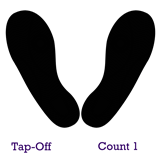Fall Audition Process
Following the video audition, the live audition process will consist of two parts; an ensemble evaluation and an individual evaluation. In the ensemble evaluation, each section will audition together as a line on a rotating basis trying various player combinations. During the individual evaluation, students will be asked to sight read and may be asked to play any of the music found on the website.
Results for the Snare and Quad lines will be posted first. Results for the Bass line will be posted second. The Cymbal line results will be posted third. Based on your video audition results, you will be given section(s) to prepare for that will give you the best opportunity to make the line. All returning members (except for the section leaders) are required to re-audition each year — all spots are open and no spots are guaranteed.
Audition Mentality
CUD is looking for players who want to be a part of the drumline as an ensemble and not just play a certain instrument. This means understanding and respecting that the Clemson Drumline is made up of 4 sections - snares, quads, basses, and cymbals - and each section is of equal importance to Tiger Band, to the music, and to our success as a unit. At Clemson, there is no hierarchy. Everybody is valued, and everybody contributes.
Audition Material
Instrument assignments will be based on the ensemble audition (using the music found on the Music page) and the individual audition (which includes sight reading). Memorization of the exercises are required for the audition; cadences, supplemental materials, and pregame music do not have to be memorized for the audition. In addition, a show excerpt will be posted on the Music page on August 1st. This excerpt is expected to be playable with musical expression and memorized for the purpose of emulating mid-season music distribution. Please check the website on August 1st to download the show excerpt and prepare it for the call-back auditions.
Basses and Cymbals:
When practicing split parts, Basses should choose one of the drums and Cymbals should choose one of the Cymbal parts described in the Notation Legend. During the ensemble audition, you may be moved around, so being adaptable and having a basic knowledge of the part as a whole would be to your advantage. The cymbal line plays a variety of techniques that are described in the Cymbal Technique Manual including crashes, chokes, slides, hi-hats, smashes, sizzles, scrapes, and taps. Cymbals may be asked to play forte crashes and upbeat hi-hats while marking time to demonstrate sound quality and timing/feel. New cymbal players should also refer to the article, Motivating the Marching Cymbal Line and do your best. We will teach you these techniques in further detail when you arrive at camp.
Helpful Tips
Your audition will be judged on the qualities described in Our Expectations.
Practicing with a metronome is a must — if you don’t own one, there are several simulated metronomes available on the internet.
Auditions will be held in the Brooks and Bellamy Theaters in the Brooks Center for the Performing Arts — an Online Campus Map is available on the Clemson University website.
Items Needed for Camp
The following items are required for auditions and camp:
- 3-ring binder with all music for your section in plastic page protectors (for use during auditions, through camp, and into the early season)
- Practice page
- Sticks
- Snares need to bring their own sticks to auditions - Vic Firth Mike Jackson signature sticks
- Quads need to bring their own sticks to auditions - Vic Firth Bill Bachman Billy Clubs
- Basses will be provided with mallets but should also bring sticks and a practice pad
- Pencils (everyone) and Highlighters (basses & cymbals only)
- Appropriate clothes and shoes for marching rehearsals
- Ear plugs
- Vic Firth ear plugs will be sold at band camp and throughout the year for $10 a pair
- Or, you can purchase your own - Ear plugs are required for all indoor rehearsals the entire season!
- Required Purchases at Tiger Band Registration:
- Marching Shoes
- Tiger Band T-shirt
- Flip Folder

